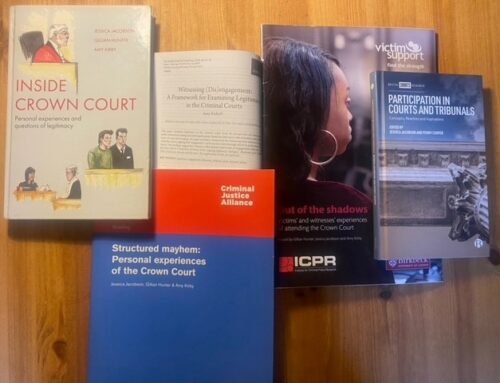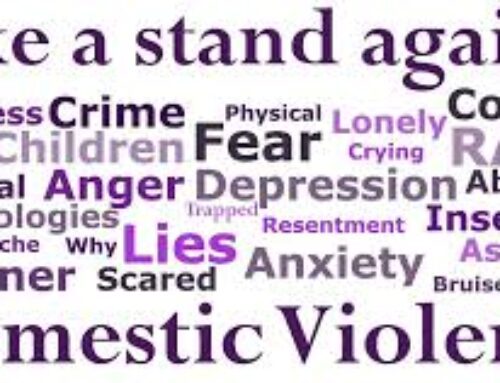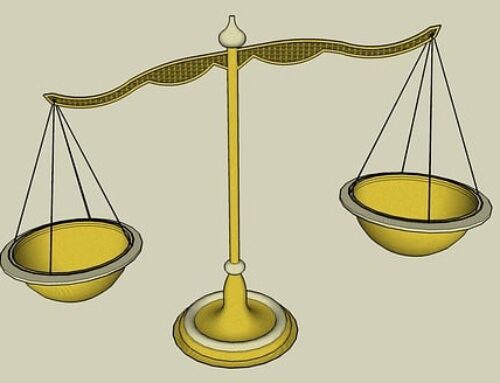Dermot Feenan, Visiting Scholar at the American Bar Foundation, May 2016, and Research Fellow, University of Portsmouth, reflects on a number of themes arising from the conference ‘Metrics, Diversity and Law’ organized by the Research Group on Legal Diversity, American Bar Foundation, 5-6 May, 2016.
Increasing attention is being paid in legal scholarship to diversity. For instance, in spring 2016 HeinOnline showed over 1,500 articles with ‘diversity’ in the title of law journal articles. Given the empirical tendency in much socio-legal research, consideration of ‘metrics’ – as a way of measuring social phenomena – is also important.
Though the term ‘diversity’ originated in relation to social life in the 1960s in the US, women and minority ethnic legal scholars used the term increasingly in the late 1980s and early 1990s to challenge hiring processes in North American law schools that tended to appoint white, male scholars.[1] Elsewhere, calls were being made for diversity in the judiciary to achieve ‘representation’ of women and ethnic minority groups.[2] Diversity discourse has spread across most western countries, and extended, in recent decades, to include sexual orientation and disability. More recently, debate has moved towards ‘substantive’ diversity in terms of encouraging differences in judicial decision-making.[3]
Yet, little work has been done on measuring diversity in the legal profession. Much of the existing legal scholarship focuses on arguing for diversity and the constraints to achieving diversity, often leaving unstated, and certainly unanalyzed, what is meant by the concept. It is perhaps doubly fitting, therefore, that the American Bar Foundation hosts the Research Group on Legal Diversity that organized the conference ‘Metrics, Diversity, and Law’, since the ABF is a leading research institute for the empirical study of law. Its Faculty members were among the first sociolegal scholars to use ‘diversity’ in social category analysis in law journals – in a survey of racial representation among lawyers in Chicago.[4] The Group was established in 2011; holding three previous conferences, and publishing work.[5]
Part of the difficulty in measuring diversity lies in a lack of consensus as to what ‘diversity’ aims to achieve, whether, eg, ‘representation’, ‘different voice’ or ‘celebration of differences’, and what those elaborations entail. Indeed, Valverde[6] concludes not only that diversity is ‘not only protean, constantly in motion, and multivocal, but is also unevenly and unpredictably visible’ (p 920), but also, perhaps more importantly for this challenge of establishing metrics, ‘it is impossible to predict, in advance of the facts, which items, issues, things, or persons will become embroiled’ (p 921). Moreover, research in the US shows tensions between idealized conceptions and complex realities of difference, as well as the challenge of balancing group-based commitments against traditional individualist values.[7] Can metrics and diversity work?
Conferring on metrics
The conference provided a range of views among its 23 presentations, chairing comments, and audience interventions from almost 40 attendees. The following paragraphs summarise some of the key themes only.
Lee Webster, Director of Talent Acquisition and Recruiting at the University of Texas Medical Branch, described the current state of diversity metrics as ‘Jurassic’ because existing measures tend, compared to approaches in other professions, to address only demographic data, which cannot alone drive organizational or social change.
An explicit, and sometimes unexplicated, issue was the definition of what gets measured. Speakers generally referred to the social categories of gender and race, with some attention to other legally protected characteristics such as disability, age, and sexual orientation; and fleeting recognition of further categories such as class, ways of thinking, and lifestyle. While the value of demographic data was recognized, there was also recognition that counting numbers, and against comparators such as the ‘pool’ or current population or organizational distribution, is insufficient. The study by Emily Poppe, Cornell University, of gender and partnership in top US law firms, 1985-2010, revealed that despite the increase in recent years in female entry to firms, the gap between men and women in partnership shows no sign of narrowing; undermining the view that it will simply be a matter of time before equal numbers are achieved. Research by Chris Rider and colleagues at Georgetown – albeit in the field of hiring to the NFL – concluded that addressing performance-reward bias can enhance the effectiveness of diversity initiatives, such as quota requirements at interview.
Attention was given to how to measure, with the emphasis on quantitative measures. Several attendees also stressed the value of qualitative measures, including stories and focus groups.
Critiques
A number of important critiques were made of the way in which diversity is conceived and used, and the limitations of a metrics approach. Hilary Sommerlad, University of Leeds, noted that in many cases diversity neglects or disregards systemic inequalities, and ignores multiple intersectionalities. Metrics, she added, can be crude if they necessarily assume that equality and diversity can be measured through numbers. Aracely Muñoz Petrich, Minority Corporate Counsel Association, referred to phenomena not typically captured in metrics: the strategies of passing and covering that many Latinos and Latinas must adopt to fit in, and the cultural norms that may affect entry to and participation at work. Professor David Wilkins, Harvard Law School, noted that traditional quantitative measures do not address the problem of the ‘revolving door’ – with representation staying the same but with turnover high – or typecasting, with some groups associated only with some sectors or specialisms. He added that measures need to include the success of teams and of an organization as a whole. Matt Shaw, an ABF Doctoral Fellow, observed that it was important to hear from those who are unsuccessful. Wendy Espeland and Michael Sauder referred to Campbell’s Law on unintended effects. Among those effects is risk of ‘gaming’ the data.
Given the problematics of metrics, among the more intriguing proposals were those for standardisation, both national and international, of measures for metrics. Standardising diversity seems oxymoronic; when an integral component of diversity – difference – is translated into a metonym for sameness. Perhaps more intriguing is the view prevalent among some audience members that they are ‘diverse’ individuals, which seemed – ironically – to be used by those referring only to a singular identity category.
Significant, too, was the preponderant grammar of business used by many corporate presenters: ‘organisational change’, ‘management’, and ‘return on investment’; with market-based and consumerist logics for diversity: ‘the market drives behaviour’ (Bruce Goldberg, Allstate Corporation), and ‘the only metric that counts is the metric imposed by the customer’ (Aric Press, Bernero & Press LLC). The business model has been critiqued elsewhere,[8] and Professor Lauren Edelman, University of California, Berkeley, whose existing work has identified the managerialisation of diversity,[9] challenged this ‘privatisation’ of diversity.
Conclusion
In 2006, Conley[10] wrote in his survey of US law firms that ‘diversifying the membership of the private organizations in which lawyers practice is, and is likely to remain, an extraordinarily difficult task’ (p 851). A particular value of the conference was that it brought together in conversation influential practitioners, senior officer holders in public and private, national and multinational, organisations (including the US Navy and Microsoft respectively), and legal scholars working in the field. The conference may go some way to making less difficult that diversification, while also serving to highlight some of the problematics of metrics and diversity.
[1] Eg, Derrick Bell, ‘Dividends of Diversity’ (1990) Bill of Rts J (December) 16-17.
[2] Barbara Luck Graham, ‘Judicial Recruitment and Racial Diversity on State Courts: An Overview’ (1990) 74(1) Judicature 28-34.
[3] Eg, Rosemary Hunter, ‘More than Just a Different Face? Judicial Diversity and Decision-making’ (2015) Current Legal Probs 1-23.
[4] John P Heinz, Edward O Laumann, Charles L Cappell, Terence C Halliday and Michael H Schaalman, ‘Diversity, Representation, and Leadership in an Urban Bar: A First Report on a Survey of the Chicago Bar’ (1976) 3 Am Bar Found Res J 717-75.
[5] Spencer Headworth, Robert L Nelson, Ronit Dinovitzer and David B Wilkins (eds), Diversity in Practice: Race, Gender, and Class in Legal and Professional Careers (CUP 2016).
[6] Mariana Valverde, ‘The Ethic of Diversity: Local Law and the Negotiation of Urban Norms’ (2008) 33(4) L & Soc Inquiry 895-923.
[7] Joyce M Bell and Douglas Hartmann, ‘Diversity in Everyday Discourse: The Cultural Ambiguities and Consequences of “Happy Talk”’ (2007) 72 Am Socio Rev 895-914.
[8] Eg, Clare McGlynn, ‘The Business of Equality in the Solicitors’ Profession’ (2000) 63 Modern L Rev 442–56.
[9] Lauren B Edelman, Sally Riggs Fuller and Iona Mara-Drita, ‘Diversity Rhetoric and the Managerialization of Law’ (2001) 106(6) Am J Socio 1589-1641.
[10] John M Conley, ‘Tales of Diversity: Lawyers’ Narratives of Racial Equity in Private Firms’ (2006) 31 L & Soc Inquiry 831-53.






Leave A Comment